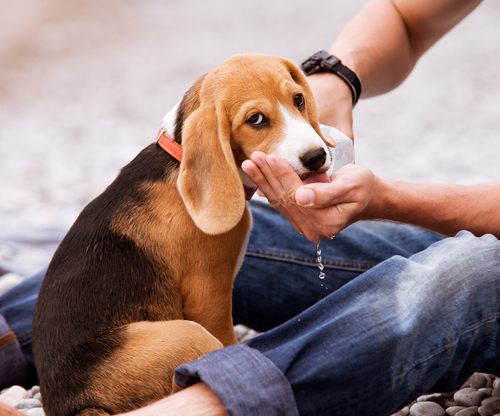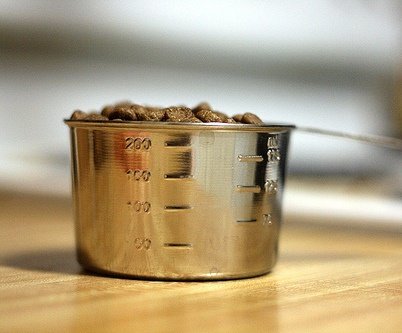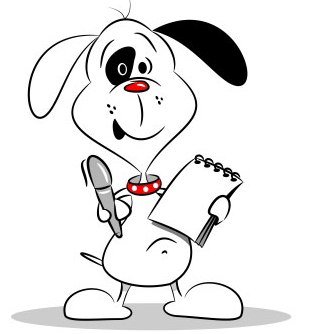When it comes to a puppy there are so many questions. Be it you’ve had a few over the years or this is your first time having a four legged best friend from an early age there are lots of concerns for new puppy parents. People talk all the time about proper foods, safe chew toys and ways to potty train but there is one category of care that not many bring to light: Dehydration. With so much else to monitor it’s hard to remember everything so I’ve comprised a pretty simple list of things to keep in mind about your fuzzy little friend.
Contents
So how much water should my puppy drink?
Puppies, oh wondrous puppies. They chew our shoes and make lots of accidents in our houses. If you’re anything like me you’ve called the vet over a dozen things but how much (or how little) your puppy is drinking may not be one of them. Never fear, we can help! Not surprisingly, there is no exact amount as to how much a puppy should be drinking on a daily basis.
On active days with play dates or walks around the neighborhood boost that amount up, sometimes to twice the minimum daily amount!
How can I tell if my puppy is dehydrated?
No sweat! There are a few varied ways to tell if your puppy is getting enough intake when it comes to fluids. A puppy’s coat should fit just so on his body with a little bit of wiggle room over his shoulders.
If the skin over your puppies shoulders is slow to snap back into place then we have an issue. A slow ‘snap back’ time indicates a dehydration level between seven and eight percent, ten percent being a dangerous level.
Another good way to gauge hydration in your canine friend is to check it’s capillary refill time. By gently pressing your finger onto the puppies gums you can block the flood of blood (don’t worry, it doesn’t hurt or cause damage) and when you release your finger it will allow you to gauge hydration. By pressing the gums you turn the area white. When your finger is released that white section should turn a healthy pink within two seconds, indication your puppy is well hydrated.
If it takes between four to five seconds to return to it’s normal color your puppy is dehydrated and anything more then five seconds is dangerous!
Puppy dehydration causes
Now that we’ve gone through the diagnose of dehydration let’s look at a list of things that can cause such an issue for our puppies.
- Vomiting – Excessive vomiting can quickly lead to dehydration.
- Diarrhea – Same as vomiting, this can quickly become a big problem.
- Fever – Can be result of heat stroke or hyperthermia.
- Excessive Urination – This can be a sign of major problems including kidney disease and diabetes.
How can I help my puppy?
If it takes longer then five seconds during the capillary refill test then a veterinarians attention is needed immediately for your puppy. The vet can give intravenous fluids and help your puppy get back to a normal hydration level while sourcing why he or she became so dehydrated to begin with.
If your puppy was between the two and five second count then take the puppy away from any activity, offer a bowl of cool water and a bowl of warm or room temperature water to encourage drinking. Keep the puppy calm for at least an hour, checking refill time every fifteen minutes.
My puppy drinks a lot of water, should I worry?
Opposite of dehydration is excessive drinking. This can also indicate problems.
Sometimes a change in food, exercise level or atmosphere can cause some extra drinking but if your puppy is drinking what seems like too much there could be a major, underlying problem.
Regardless of what’s going on in our lives our puppies have to be raised with a watchful eye so pay attention to what goes in and what comes out for a happy, healthy four legged friend!

I have lived in big cities my entire life. Having grown up on the Upper East Side in Manhattan, my early life was an exciting one, filled to the brim with interesting encounters and opportunities popping up at every street corner. Like many city people, my passion for dogs first started when my parents decided to bring a puppy into the household. For them, it was a way of getting me to spend less time at his computer or wandering aimlessly around the city with my friends. Little did they know that bringing a Labrador Retriever into their apartment would determine not only the course of their son’s professional career but also my love life.
Having obtained a Computer Science Bachelor’s degree from Fordham University, I went on to pursue an IT career in the Big Apple. After a few years of doing basic cybersecurity and tech support work in various offices around Manhattan, I decided to leave New York and look for my calling in Boston, Massachusetts. There, I got a Master’s degree in Computer Science with a specialization in Web Development. As a means of supporting myself through college, he found a salesman job at a local paper company, where he met Mary, the love of my life and the person I’d end up creating My Sweet Puppy with.





I would like to consider the chance of thanking you for the professional direction I have usually enjoyed visiting your
site. We are looking forward to the actual commencement of my school research and the overall groundwork would never
have been complete without coming over to your site.
If I may be of any help to others, I’d be ready
to help as a result of what I have gained from here.
Thanks for connecting to Mysweetpuppy.net. Please keep in mind that I, Claudia Bensimoun, do not write any of the blogs or reviews on this website, nor have I in the past. I only answer the comments section.Dogs all need to have fresh water available to them 24/7. Keeping several bowls of water around the house for your pooch works best. If your pooch is both an indoor and outdoor dog, make sure that you have cold, fresh water outdoors as well. That said, water needs to be free of slime, flies and mold. Daily washing of your dog’s dishes will ensure clean water. It is also important to keep watch of how much water your dog is drinking every day. If your dog starts changing his drinking habits, please consult with your veterinarian, since these changes could indicate a possible health problem. Drinking too much water can also be problematic. Parvovirus, pancreatitis and leptospirosis cause a dog to drink less water. That said, bladder infections, metabolic problems like Cushing’s or diabetes result in excess thirst. It’s always best to consult with your veterinarian for a full medical check-up if you notice that your dog is drinking too little or too much water.
My puppy is only drinking very little water. How much should he be drinking at 12 weeks?
Thanks for connecting to Mysweetpuppy.net. Please keep in mind that I, Claudia Bensimoun, do not write any of the blogs or reviews on this website, nor have I in the past. I only answer the comments section.
Puppies drink plenty of water. Very young pups that are still nursing will get hydrated from their mother’s milk. That said, when weaning young pups, it’s important to have fresh water nearby at all times. Pups all need to be checked to make sure that they are drinking enough water each day. A pup (young pups) should drink as much as half a cup of water every 2 hours.Pups should also not drink too much water. That said, older pups will need much more. Clean fresh water needs to be available at all times. During the hot summer months, your puppy will drink much more.(Half- ounce to one ounce of fresh water per pound of body weight per day) Water is so important to pups and adult dogs because it regulates body temperature.
As usual, always consult with your veterinarian for the best advice.
Fun article to read:https://www.buzzfeed.com/evrivali/pick-five-vegetables-of-five-different-colours-and-328m3
My dog has cut his skin on his side. what do I do?
Thanks for connecting to Mysweetpuppy.net. Please keep in mind that I, Claudia Bensimoun, do not write any of the blogs or reviews on this website, nor have I in the past. I only answer the comments section.I am in no way connected to the content written within this website, most especially the German Shepherd blog. This website hires other writers for their blogs.Please do not contact me regarding website content. I only write content within the comments section.Cuts or Wounds on a Dog’s Skin
How To Treat Cuts in Dogs?
If there is bleeding, you will first need to make sure that the bleeding stops by applying direct pressure to the wound.Cuts on the skin, if they are not deep tissue cuts, and are just simple lacerations, need to be cleaned, and any foreign material from the wound removed. This will reduce the chances of a bacterial infection. If your dog’s cut is already infected, your veterinarian will take a tissue sample for lab testing. Your veterinarian will clean the cut or wound (lavage), and wash away both microscopic and visible dirt, so as to eliminate infection possibilities.An antibiotic is prescribed ,if your dog has a bacterial infection. Your veterinarian will also prescribe pain meds for your pooch, so that he can feel more comfortable, and get a good night’s rest!
Always consult with your veterinarian right away if the cut looks deep or infected. That said,serious injury may be present, even if the cut or wound has just small puncture marks. Your dog may have organ damage if he was bitten on his side by another dog. Dog bite marks need to be examined right away by your veterinarian. There are also some wounds that will need surgery like flaps of skin. A veterinarian may use skin or muscle from other areas of the body, and surgically attach it to cover the wound. If the wound needs draining, your veterinarian may drain the wound. Sutures, surgical glue, and or staples are used by your veterinarian to close up the wound. Dressings can also help keep the wound clean. If you’re bringing your dog home from the veterinarian make sure that you know how to change the bandages, what ointment to put on, and how often antibiotics need to be given. Always inquire as to what you should do if you forget to give a dose. All medications are different.
For more on cuts and wounds, visit https://vcahospitals.com/know-your-pet/care-of-open-wounds-in-dogs